Magnesium sulfate is the systematic name for Epsom salt, a substance often justifiably praised in horticulture. This manuscript aims to show how Epsom salt helps promote better health and well-being for plants. By supplying the necessary nutrients that can lead to better growth, increased flowering and more fruiting, Epsom salt is an invaluable resource to both amateurs and professional gardeners. Different methods of application, recommended usage rates and certain plant species that gain most benefits from this mineral will also be discussed. Again, we will examine some scientific principles underlying the use of Epsom salts to enable readers to have comprehensive knowledge on their effective employment in gardening habits.
Understanding Epsom Salt and Its Benefits for Plants
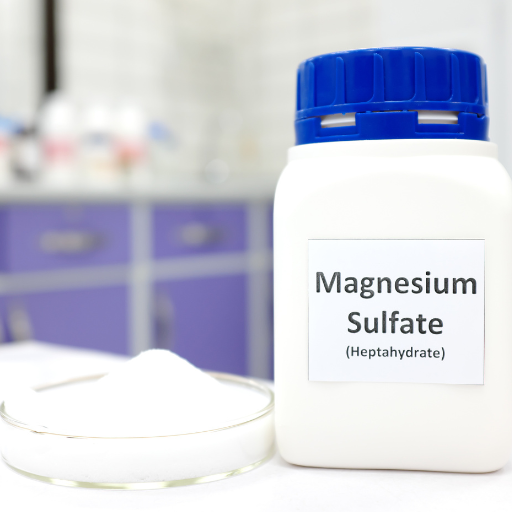
To address specific nutrient deficiencies, Epsom salt, made from magnesium and sulfate, plays a crucial role in plant health. Magnesium is required for chlorophyll production and photosynthesis, and it helps to activate enzymes needed for plant growth. Protein synthesis is boosted by sulphate, which leads to good nutrient absorption and enhances the overall vitality of plants. Hence, it has been documented that Epsom salts cause an improved germination of seeds, better absorption of nutrients as well as blossoming and fruiting in different kinds of plants. Regular application of Epsom salt can result in greener leaves and more resilience to environmental stresses, leading to increased produce; hence, it should be featured on every gardener’s must-have list.
What is Epsom Salt?
Epsom salt, otherwise called magnesium sulfate (MgSO₄), is a naturally occurring mineral compound that supplies essential elements for plant growth. It contains about 10% Mg and 13% S by weight. Magnesium is significant because it acts as a catalyst for many enzymatic reactions, including the transformation of light energy into chemical energy during photosynthesis. As far as solubility goes, Epsom salt dissolves easily in water, thus ensuring efficient uptake through root systems when applied as soil or foliar treatment.
Application rates often range from1-2 tablespoons per gallon water for most plants regarding optimal concentration.Therefore this dosage provides enough magnesium and sulfur without causing burn out.It can also be used as a soil amendment, especially where magnesium-deficient soils make growing conditions difficult for crops like tomatoes, peppers, or roses, which increase their growth rate and flowering tremendously through the provision of minerals.
How Epsom Salt Benefits Plant Growth
The rich content of magnesium and sulfate in epsom salts critically benefits plant growth because these are indispensable elements in different physiological processes taking place inside any given plant structure. For example, magnesium supports chlorophyll synthesis, a process promoting photosynthesis, hence the ability of plants to convert sunlight into energy. Consequently, this leads to better growth rates and more green leaves. In addition, sulfur is a key component in Epsom salt that helps amino acid synthesis and builds proteins for overall plant health and resistance to diseases. Moreover, through using Epsom salts, the uptake of nutrients by plants is facilitated, allowing for efficient access to essential micro-nutrients required in growth, flowering, and fruiting processes. When utilized, crops produce more, thus yielding high-quality products, making it an invaluable asset both at home and on commercial farms.
Essential Nutrients in Epsom Salt for Plants
Epsom salt provides the two most important nutrients for healthy plant life: magnesium and sulfur. It is essential in chlorophyll molecules because it serves as a central atom necessary for photosynthesis and the conversion of light energy into chemical energy by plants. It also takes part in activation of various biochemical reactions through the activation of enzymes. Sulfur, on the other hand, is integral to amino acids and protein synthesis that contribute to metabolic process as well as production of plant hormones. Both of them work together towards increasing plant yield, making them flower more often and improving their general productivity levels. The presence of these essential nutrients in Epsom salt makes it an effective remedy against deficiencies and promotes strong plant development.
Identifying the Right Plants for Epsom Salt Application
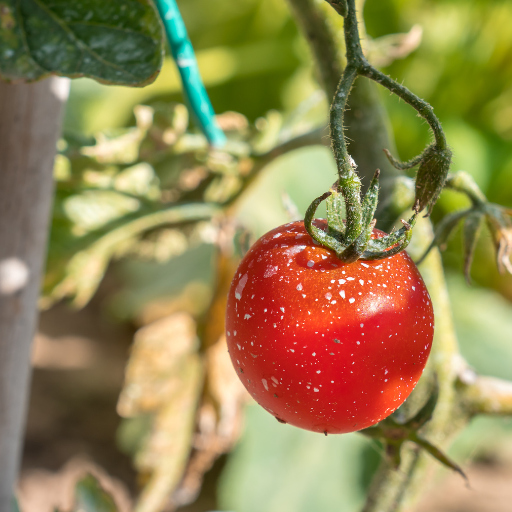
Do any Plants Need Epsom Salt?
- Tomatoes: If you apply Epsom salt to a tomato plant, it absorbs more nutrition important for fruit growth, resulting in bigger, tastier fruits. The magnesium present in Epsom salt also means that it helps prevent common problems such as blossom-end rot, which is frequent.
- Peppers: These plants benefit greatly from Epsom salt because it encourages the formation of flowers and fruits. Further, high magnesium levels maintain the overall health of the entire plant, guaranteeing the availability of plenty of colorful peppers.
- Roses: Applying Epsom salt to rose bushes can promote fast growth and improved blossoming. In addition, magnesium enhances flower colors and makes plants resistant to pests.
- Leafy Greens (Spinach and Lettuce): Spinach and lettuce need not worry about a lack of magnesium as they have a good supply from Epsom salt. Therefore, such nutrients enrich the greens, making them better tasting and smoother.
- Cucumbers: When supplied with enough nutrients gained through using Epsom salts, cucumbers increase yield and quality standards. This prevents some common things like yellow leaves so that plants are healthy throughout their lives.
- Potatoes: Potato yields may increase by adding Epsom salts to help nutrient absorption during the tuber development stage. Magnesium is useful for fighting diseases in potatoes and quickening the growth of early stages.
- Carrots: When applied with Epsom salt, carrots grow bigger roots, thereby developing strong roots. In addition, promoting soil fertility allows carrots to grow well.
How do you use Epsom Salt on Flowering Plants?
The primary component present in this substance is magnesium sulfate which makes it quite valuable when dealing with flowering species. By offering magnesium, an essential component needed for photosynthesis and other plants’ life, its use improves blooming. For this reason, Epsom salt should be dissolved in water before being used directly to the soil or sprayed to the leaves as a foliar spray. In this case you can effectively absorb nutrients.
For instance, hydrangeas benefit immensely from Epsom salt, which enriches the soil with magnesium and influences flower colour based on soil pH levels. Similarly, geraniums and petunias exhibit improved growth and vibrant flowers when supplemented with Epsom salt, showcasing increased resilience against environmental stressors. Moreover, regular application of Epsom salts may increase profusion during the blooming phase in addition to extending flowering periods making it an ideal supplement for enhancing flowering plants in gardeners nutrient checklist.
Epsom Salt and Vegetables: Best Practices
In vegetable cultivation, some best practices can make the use of Epsom salt more effective and improve plant health. First of all, it is important to test the soil; this will show how much magnesium and pH are already in it so that one can know if applying Epsom salt is necessary or not, and establish the right time for it. They are usually made at planting times or during growing seasons with a rate of 1 tablespoon per gallon of water applied every four to six weeks.
It would be beneficial to apply Epsom salt in the morning or during late afternoon as temperature levels would be lower hence ensuring better uptake by plants which prevents loss of water via evaporation. Also, mixing it with soil before planting or using it as a foliar spray increases nutrient availability. However, care should be taken not to over-apply since an excess of magnesium results in an imbalance, affecting nutrient availability, thereby hurting the production of vegetables. Adherence to these rules may help increase the quality and quantity of vegetables making Epsom salts an essential supplement for gardeners.
How to Apply Epsom Salt to Plants
For proper application of Epsom salt on plants, gardeners must have a systematic approach that ensures optimum nutrient uptake and minimum chances of excessive use. Firstly, dissolve 1 to 2 tablespoons of Epsom salt into one gallon of water to form a solution rich in nutrients. This mixture can be applied as a soil drench or foliar spray, depending on the needs of the plants involved. For soil applications, it is advisable to directly apply the Epsom salt solution at the base of plants especially when it is cooler as this will reduce evaporation and enhance absorption.
When using Epsom salt as a foliar spray ensure that you mist the leaves evenly so that they can be absorbed directly through leaf cuticle. To get maximum results, repeat this process every four to six weeks during growing seasons. It is important for gardeners to observe how their plants respond to Epsom salts and adjust the frequency and concentration accordingly based on the health of their crops and growth performance. Lower first concentrations are always recommended to avoid potential toxicities or imbalances in soil nutrient.
Foliar Spray: A Step-by-Step Guide
- Preparation of Solution: Start by measuring out 1-2 tablespoons of Epsom salts which should be dissolved in one gallon of water. Ensure all magnesium sulfate is well distributed.
- Selecting Time: Apply your foliar spray either early in the morning or late afternoon. By doing this you will minimize evaporation while ensuring that there are no burns due to overabsorption.
- Application Technique: For optimal results, cover all plant foliage with an even mist from a sprayer or a spray bottle; concentrate more on lower surfaces where most stomata are situated and nutrients are absorbed.
- Frequency of Application: For best results, apply your foliar spray every four to six weeks throughout the active growth period, but monitor closely for any nutrient deficiencies or toxicities.
- Post-application Assessment: Observe plant health and growth patterns after each application to determine the effectiveness of the foliar spray. Depending on the plants’ response to this treatment, modify the concentration and frequency.
Soil Application Methods for Optimal Growth
If you would like to optimize your plant’s growth via soil application method using Epsom salt, there are several effective methods that can be used. First apply Epsom salt directly into the soil before planting by mixing 1 tablespoon per foot of row, or putting it around individual plants’ base. In this way magnesium sulfate is available for uptake as root system establishes. The second method involves making a solution from dissolving 1-2 tablespoons of Epsom salts in a gallon of water which is then poured on the soil around the plants, taking care not to wet excessively leaves leading to fungal problems occurring Thirdly, occasional soil testing may be useful so as to check on magnesium levels since it will dictate how often and how much Epsom salt should be applied on fields. Consistent evaluation of soil quality and plant response further enhances proper Epsom salt use thus improving their overall health status and productivity.
When and How Often to Use Epsom Salt
To make sure that Epsom salt is used effectively for the growth of plants, one should really consider timing and frequency. As a rule of thumb, Epsom salts are best applied towards the start of the growing season or at planting time to help enhance seed germination and root stalk development. For this reason, regular applications should be made every month or month and half, especially during crucial growth stages. Regular monitoring of plant health is vital; in cases where nutrient deficiency symptoms or retarded growth are evident on plants, it may require more frequent use. However excessive use should be avoided since excess magnesium can disrupt balance with other essential minerals in soil. This will guarantee that time was not lost; but rather made a meaningful contribution during the process by providing valuable data through regular soil testing services.
Special Considerations for Epsom Salt Application
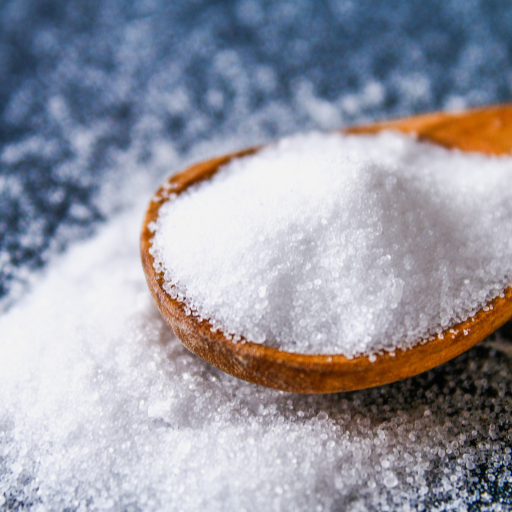
- The effectiveness of Epsom salt depends on the soil type and pH levels. For example, sandy soils may result in a more rapid loss of nutrients, while clayey soils can better hold moisture and nutrients. An ideal soil pH, usually between 6.0 and 7.0, helps with nutrient availability, especially magnesium and sulfur from Epsom salt.
- It is important to consider the compatibility of nutrients when using Epsom salt together with other fertilizers. While magnesium synergistically enhances nitrogen and potassium, it might cause nutrient lockout if overused since it interacts antagonistically with calcium and potassium.
- Magnesium requirements differ among different plant species. Therefore, it is important that applications be tailored specifically for certain plants based on their specific nutritional need for supplemental magnesium not required in others as evident by tomatoes and peppers that greatly benefit from Epsom salt use while other do not require it at all so these factors should be taken into account when using this product therefore you have to monitor your plants closely such that you will know if there is a need or not need to apply the mineral frequently.
Adjusting Epsom Salt Usage by Plant Type
When adjusting Epsom salt usage by plant type, many things must be taken into account, including the nutrient needs of various crops as well as physiological responses peculiar to each crop species under consideration here. Some plants, like tomatoes, do well with a tablespoonful per foot of height, which supports fruit development during the flowering phase and hence avoids blossom end rot caused by a lack of enough magnesium.
Peppers also respond positively to such application rates since a sufficient amount of magnesium contributes to chlorophyll formation, thus increasing overall fruit quality. For instance, leafy greens (spinach, lettuce, etc.) may go lower than this recommended value, applying at approximately 1 teaspoon per square foot instead. Excessive Mg could affect its uptake, especially nitrogen levels critical for growth leaves.
In addition, it is possible to add Epsom salt to citrus trees by using 1-2 tablespoons per month during the growing season, which improves both fruit quality and yield. In this case, careful maintenance of soil pH within a pH range of 6.0 to 6.5 is important due to nutrient availability.
In conclusion, Epsom salt usage should be adjusted based on plant type, growth stage, and soil conditions, for which soil testing can be done, so that magnesium does not interfere with the balance of other essential nutrients in the media.
Avoiding Common Mistakes with Epsom Salt
A few common mistakes that have an impact on efficient use of Epsom salt as a source of magnesium for plants need to be avoided. First off, overuse might lead to too much magnesium, which causes toxicity because it interferes with the uptake of other vital nutrients, especially calcium and potassium. You must strictly adhere to the recommended application rates provided for every plant class at particular growing stages before applying this product otherwise you may end up overusing it hence killing your crops while neglecting soil tests before adding the mineral would make us fail in managing our nutrient levels; instead, we should consider doing soil test first where we are able reveal how much magnesium is already there hence helps us apply adequately. Also, one should not apply when there is no water or during drought as this will simply result in ineffective because without moisture nutrients do not go through well together with not having taken into mind what pH means for soils generally thus giving priority consideration towards maintaining balanced bioavailability between Mg and plants but many gardeners tend ignore this aspect thus facing nutrient lockout situations therefore these errors have been outlined here so that people can avoid making them in their gardens.
Signs of Overuse and How to Correct It
Using too much Epsom salt in gardening can cause nutrient imbalances and potential toxicity. The first sign is interveinal chlorosis, a phenomenon whereby the veins remain green while the leaf tissue between them turns yellow. This symptom is often a sign of toxic overload with magnesium, which slows calcium and potassium uptake, which is crucial for plants’ health.
Leaf curling or burning at the tips is another common indication of excessive use, which shows how the plant suffers from stress due to high magnesium levels disrupting the absorption of other important nutrients. Besides, poor growth or stunted development would suggest that the extra amount of this element might be interfering with overall nutritional balance, particularly in highly fertile soils.
To address the problem accurately, soil test should be carried out to determine existing magnesium levels, taking caution not to go beyond 150 ppm which may imply excessive conditions. Should such abuse exist, no more Epsom salt applications by farmers should be done but a good watering plan should be used since it will dilute excess magnesium and flush it out of soil. Additionally, inclusion of balanced fertilizer supplying necessary nutrients along with sources of calcium can help alleviate effects due to magnesia toxicity. By regularly watching plants’ reactions and analyzing soil characteristics, required adjustments are made so as to ensure nutrient levels remain within an optimum range, enabling a healthy growth process in plants.
Special Considerations for Epsom Salt Application
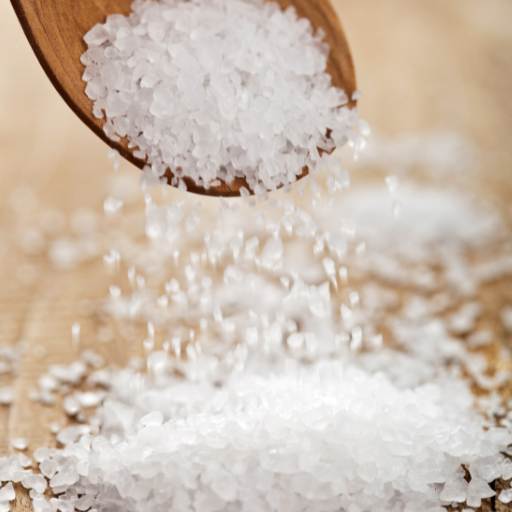
Several key factors must be considered when applying Epsom salt to ensure that it is used effectively without causing nutrient imbalances. Firstly, one should check the needs of the specific crop as some may be more sensitive to magnesium. Avoid using Epsom salts unless a deficiency has been confirmed since too much application can lead to the toxic levels mentioned above. Besides, timing of application is important- preferably at the early stage of growth or high nutrient requirements like flowering and bearing time.
Also, the method of application has to suit soil and crop requirements. An example of this would be plants that show immediate signs of magnesium deficiency which could quickly take up Mg by foliar spraying. Furthermore, soil application should come with sufficient watering for even distribution of Mg in the root zone, whereas regular monitoring helps prevent excess accumulation, which is common in highly fertile soils over a period of time. As such, care must be taken based on current soil and plant assessments thereby ensuring that the effects are beneficial without any negative implications on plant health due to using Epsom salt.
Differentiating Dosages For Varying Soil Types
For differentiating dosages for different soil types, it is necessary to understand both the existing nutrient profile of the soil and the crops’ particular needs. To compensate for the possible lack of magnesium, light-textured soils (sandy), which drain fast and have low holding capacity for nutrients, may need higher amounts, usually between 1-2 tablespoons per foot tall plant height, as adequate dosage for magnesium deficiency treatment. Conversely, clay soils retain moisture and nutrients better; thus, lower quantities, approximately one tablespoon per foot tall plant height, might suffice.
Moderate applications at about 1 tbsp/ft height starting point are usually acceptable on loamy soils, which make up most planting fields, according to experts. However, before applying any extra amounts one should conduct accurate analyses regarding already present Magnesium levels because excessive use tends to disrupt balance among other essential nutrients needed by plants. Moreover, continuous crop monitoring after application can help fine-tune dosages further with respect to particular stage of growth and indicators of health.
Utilizing Epsom Salt in Various Weather Regimes
In different weather conditions, it is important to consider temperature and humidity since these heavily influence plant uptake of magnesium and other essential nutrients. Epsom salt will be especially useful in xerophytic climates characterized by low humidity and high rates of evaporation for ensuring water retention and fighting nutrient deficiency cases. On such occasions, applications should coincide with cooler parts of the day so that absorption can be enhanced while loss is minimized through evaporation.
On the other hand, humid regions may require careful utilization of Epsom salt due to potential excess soil moisture leaching valuable minerals away. Using too much Epsom salt in such places can worsen mineral imbalances, resulting in evident toxic effects on crops. As a result, regular soil testing is necessary to determine both the correct dosage and timing of application, which should ideally integrate with plant growth cycles. Moreover, it might be beneficial to apply Epsom salts foliarly during humid conditions because this provides an immediate source of Mg minus saturating soils completely. These variations assist in attaining optimum plant conditions, therefore maximizing the applicability of Epsom salt as a soil supplement given changes in weather patterns globally.
Combining Epsom Salt with Other Fertilizers: What You Need to Know
When you combine Epsom salt together with other fertilizers, it is crucial to look into the nutrient content and chemical compatibility of the additives. Epsom salt, which mainly consists of magnesium sulfate (MgSO4), can give nitrogen and potassium-based fertilizers (e.g., urea or potassium chloride) a boost in performance by promoting better uptake and utilization of nutrients in plants. This mix not only helps fix magnesium deficiencies but also optimizes nutrient balance in general within the soil.
Foliar applications usually require approximately 15 grams (about 1 tablespoon) of Epsom salts per gallon of water, while for soil amendments, I would apply about 1 to 2 pounds (0.45 to 0.9 kg) per square feet for a hundred square feet depending on how much magnesium is required by that particular crop. Always ensure there is a gap (the minimum period is forty-eight hours) between applying granular fertilizers mixed with Epsom salts so that they do not react, causing the unavailability of nutrients.
Additionally, soil pH monitoring is critical since it potentially lowers soil pH, thereby increasing soil acidity. Therefore, carry out regular tests on your soils so as to maintain their pH level at an optimum range for specific crops- mostly between six and seven marks as per the scale readings used. By doing this, farmers will not only gain more benefits from using EPSOM salts strategically but also retain coherence across diverse crops and conditions within their fertilizer programs while retaining effectiveness for all cases involved at large
Common Inquiries Regarding the Usage of Epsom Salt in Gardening
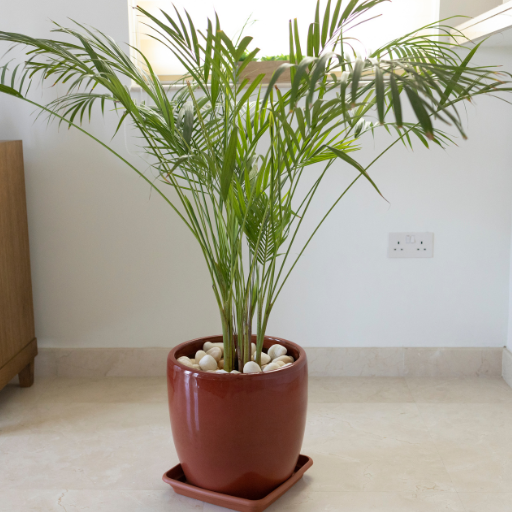
When considering using Epsom salt in gardening, several common inquiries arise. One frequent question is whether Epsom salt can replace traditional fertilizers. While Epsom salt can supplement nutrient levels, particularly magnesium and sulfur, it should not be viewed as a complete fertilizer substitute; rather, it should complement a balanced fertilizer regimen. Another inquiry pertains to the frequency of application. Typically, Epsom salt can be applied every four to six weeks during the growing season, but this may vary based on specific crop requirements and soil nutrient levels. Lastly, gardeners often wonder about the signs of magnesium deficiency. Observations such as yellowing of leaves, especially in older foliage or poor fruit development, indicate a need for magnesium supplementation, making Epsom salt a beneficial addition to soil management practices.
Can Epsom Salt Replace Regular Fertilizers?
The consensus from the top agricultural resources indicates that Epsom salt cannot fully replace regular fertilizers in gardening. It primarily provides magnesium and sulfur, essential nutrients for plants but insufficient for meeting all macronutrient requirements. A balanced fertilizer contains a more comprehensive range of nutrients like nitrogen, phosphorus and potassium necessary for optimal plant growth. Instead of being seen as an alternative to using any other form of fertilization alone, Epsom salts serve as demulcents biologically that make nutritional deficiencies much better to deal with when they are added to specific shortages rather than serving as complete solutions alone. Thus, an adequate fertilization strategy should incorporate various elements, including healthy amounts of synthetic chemicals otherwise used in enhancing plant development while still relying on analog chemical substances for overall nutritional balance.
How to Store and Handle Epsom Salt for Gardening
When storing Epsom salt for gardening one should keep it somewhere cool and dry so that it does not clump up or become degraded due to moisture exposure. Also, see to it that your container has no air in it from outside, which can add moisture to the Epsom salt. It is better if you use a properly closing plastic bag or container. Care must be taken when handling Epsom salt and gloves should be worn to avoid direct contact with skin that may cause irritation. When applying it, dissolving the salt in water is ideal as this will enable plants to take up more of it. For watering or foliar spray, one gallon of water can be used as a solution containing 1-2 tablespoons of Epsom salt depending on your plants’ requirements. Always follow application guidelines based on the specific crop requirements to avoid over-fertilisation.
Is Epsom Salt Safe for All Types of Plants?
Epsom salt (magnesium sulfate)is generally safe for most plants and can be helpful in dealing with magnesium deficiencies common in various species, including tomatoes, peppers, and roses. Nevertheless, while it does promote nutrient assimilation, excessive usage might lead to imbalances, particularly in plants prone to higher levels of magnesium, like broccoli found within the brassica family. Furthermore, it is important to note that different plants have different nutrient needs; some may not require additional magnesium; therefore, application should be adjusted accordingly. In order for optimal plant health, an assessment of soil condition is recommended before introducing epsom salts since this will help determine specific nutritional needs for each type of gardening system regarding safe dosage levels tailored towards safety consumption based on targeted plant types only
Reference sources
-
Epsom Salt Council
- Source: Epsom Salt Council
- Summary: This source provides insights into how Epsom salt can benefit various plants by supplying essential nutrients like magnesium and sulfur, which are crucial for plant growth.
-
University of Minnesota Extension
- Source: University of Minnesota Extension
- Summary: The article discusses the potential risks of using Epsom salt, such as leaf scorch from foliar sprays and increased mineral contamination, emphasizing the importance of cautious application.
-
Washington State University
- Source: Washington State University
- Summary: This document advises against the automatic use of Epsom salts unless there is a magnesium deficiency, as improper use can harm plants, highlighting the need for soil testing before application.
Frequently Asked Questions (FAQs)
Q: How can I use Epsom salt in the garden?
A: Epsom salt can be used in the garden to help improve plant health by providing magnesium and sulfur, which are essential nutrients. You can add Epsom salt to the soil or dissolve it in water and use it as a foliar spray to help plants grow bushier and greener.
Q: How much Epsom salt should I add to my garden plants?
A: The amount of Epsom salt you should add depends on the type of plant and the current state of your soil. A general recommendation is to use 1 tablespoon of Epsom salt per gallon of water and apply it to the soil around the base of your plants. For potted plants, you can add one teaspoon of Epsom salt per gallon of water.
Q: Is Epsom salt good for tomato plants?
A: Yes, Epsom salt is good for tomato plants as it can help prevent blossom end rot, which is caused by a lack of magnesium in the soil. Adding Epsom salt to your tomato plants can help ensure they get the magnesium they need to develop healthy fruit.
Q: How can Epsom salt help prevent blossom end rot in tomatoes?
A: Blossom end rot in tomatoes is often caused by a calcium deficiency, but magnesium is also important. Epsom salt can help by providing magnesium, which aids in the uptake of calcium and other nutrients. To prevent blossom end rot, you can add Epsom salt to the soil or use it as a foliar spray.
Q: Can I use Epsom salt to adjust soil pH?
A: Epsom salt does not significantly alter soil pH. It primarily provides magnesium and sulfur without affecting the acidity or alkalinity of the soil. If you need to adjust your soil pH, you should consider other amendments like lime or sulfur.
Q: Will Epsom salt kill weeds in my garden?
A: Epsom salt is not typically used as a weed killer. While it can help improve plant health, it does not have herbicidal properties. For weed control, you should consider other methods such as mulching or using a dedicated weed killer.
Q: How often should I add Epsom salt to my vegetable garden?
A: It is recommended to add Epsom salt to your vegetable garden once a month during the growing season. Dissolve 1 tablespoon of Epsom salt per gallon of water and apply it to the base of your plants. Be cautious not to overuse it, as too much magnesium can be harmful to plants.
Q: Are there any plants that don’t like Epsom salt?
A: Most plants can benefit from Epsom salt, but some, like sage and other herbs, may not respond well to high magnesium levels. It’s best to test a small area first or consult specific plant care guidelines to ensure compatibility.
Q: Can I use Epsom salt on potted plants?
A: Yes, you can use Epsom salt on potted plants. Mix one teaspoon of Epsom salt per gallon of water and apply it to the soil around the base of your potted plants. This can help provide essential nutrients and improve overall plant health.
Q: What are some gardening tips for using Epsom salt on plants?
A: Some gardening tips for using Epsom salt include: 1. Always dissolve Epsom salt in water before applying it to plants. 2. Use 1 tablespoon of Epsom salt per gallon of water for garden plants. 3. For potted plants, use one teaspoon of Epsom salt per gallon of water. 4. Apply Epsom salt solution once a month during the growing season. 5. Avoid overuse to prevent magnesium toxicity in the soil.






